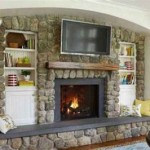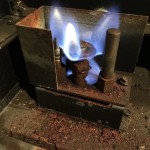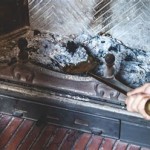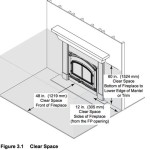Outdoor Fireplace With Grill: Combining Ambiance and Functionality
An outdoor fireplace with a grill represents a sophisticated addition to any outdoor living space, merging the visual appeal and warmth of a traditional fireplace with the practical utility of a barbecue grill. This combination offers a unique focal point for social gatherings, providing both a cooking area and a source of heat, extending the usability of outdoor areas well into the cooler seasons. The integrated design streamlines outdoor cooking and entertainment, creating a central hub for food preparation, dining, and relaxation.
The popularity of outdoor fireplaces with grills has grown substantially in recent years, driven by an increasing desire to enhance outdoor living experiences. Homeowners are now seeking ways to create comfortable and functional outdoor spaces that mirror the amenities and conveniences of indoor living areas. An outdoor fireplace with a grill directly addresses this need by offering a versatile and aesthetically pleasing solution for outdoor cooking and entertainment.
The design and construction of an outdoor fireplace with a grill can vary significantly, ranging from simple, pre-fabricated units to elaborate, custom-built structures. Regardless of the specific design, key considerations include material selection, size and layout, and integration with the surrounding landscape. Proper planning and execution are essential to ensure the safe and efficient operation of the fireplace and grill, as well as its long-term durability and aesthetic appeal.
Key Point 1: Design and Construction Considerations
The design phase is crucial in determining the overall functionality and aesthetic of an outdoor fireplace with a grill. Careful consideration must be given to the size of the structure, its location within the outdoor space, and the materials used in its construction. The size of the fireplace should be proportionate to the size of the patio or deck, ensuring that it does not overwhelm the space or appear inadequate. The location should be chosen to maximize usability and minimize potential safety hazards, such as proximity to flammable materials or obstructions to airflow.
Material selection is another critical aspect of the design process. Common materials include brick, stone, concrete, and metal. Each material offers different advantages and disadvantages in terms of cost, durability, aesthetics, and ease of maintenance. Brick and stone are popular choices for their durability and classic aesthetic appeal, while concrete offers greater design flexibility and can be customized with various finishes and colors. Metal, such as stainless steel or powder-coated steel, is often used for the grill components and can also be incorporated into the overall design for a modern look.
The construction of an outdoor fireplace with a grill requires careful attention to detail and adherence to building codes and safety regulations. A solid foundation is essential to ensure the stability and longevity of the structure. The firebox, which is the area where the fire burns, must be constructed of fire-resistant materials, such as firebrick, to withstand the high temperatures. The chimney or flue is responsible for venting smoke and exhaust gases away from the cooking area and surrounding environment. Proper design and construction of the chimney are critical to ensure adequate draft and prevent smoke from billowing back into the patio area.
The grill component of the outdoor fireplace can be either built-in or freestanding. Built-in grills are integrated directly into the structure of the fireplace, creating a seamless and cohesive design. Freestanding grills, on the other hand, can be easily moved and replaced, offering greater flexibility in terms of cooking options and maintenance. The choice between a built-in or freestanding grill will depend on individual preferences and the overall design aesthetic of the outdoor space.
Key Point 2: Fuel Options and Grill Features
The choice of fuel source for an outdoor fireplace with a grill will significantly impact its performance, convenience, and environmental impact. Common fuel options include wood, charcoal, propane, and natural gas. Wood-burning fireplaces offer the classic ambiance and aroma of a traditional campfire, but they require more effort to maintain and can produce significant amounts of smoke. Charcoal grills provide excellent heat and flavor, but they also require more attention and can be messy to use. Propane and natural gas grills offer greater convenience and control over the cooking temperature, but they may lack the traditional appeal of wood or charcoal.
The grill features of an outdoor fireplace can vary widely, depending on the manufacturer and the overall design of the unit. Common features include adjustable cooking grates, built-in thermometers, side burners, rotisserie attachments, and smoker boxes. Adjustable cooking grates allow for precise control over the cooking temperature, while built-in thermometers provide accurate readings of the grill's internal temperature. Side burners are useful for preparing sauces and side dishes, while rotisserie attachments allow for cooking large cuts of meat over an open flame. Smoker boxes enable the user to infuse food with smoky flavor using wood chips or pellets.
The size and configuration of the grill surface are also important considerations. A larger grill surface allows for cooking larger quantities of food, making it ideal for entertaining large groups. The configuration of the grill surface can also impact its functionality. Some grills have a single, large cooking surface, while others have multiple sections that can be adjusted independently. This allows for cooking different types of food at different temperatures simultaneously.
The materials used in the construction of the grill grates are also important. Common materials include stainless steel, cast iron, and porcelain-coated steel. Stainless steel grates are durable and easy to clean, while cast iron grates provide excellent heat retention and searing capabilities. Porcelain-coated steel grates are non-stick and easy to clean, but they may be more prone to chipping and damage.
Key Point 3: Safety and Maintenance
Safety is paramount when operating an outdoor fireplace with a grill. It is essential to follow all safety guidelines and precautions provided by the manufacturer and to adhere to local building codes and fire regulations. The fireplace should be located away from flammable materials, such as trees, shrubs, and overhanging structures. A fire extinguisher should be readily available in case of emergency. Children and pets should be supervised at all times when the fireplace is in use.
Regular maintenance is essential to ensure the safe and efficient operation of an outdoor fireplace with a grill. The firebox should be cleaned regularly to remove ash and debris. The chimney should be inspected annually for cracks, obstructions, and creosote buildup. Creosote is a flammable substance that can accumulate in the chimney and pose a fire hazard. Professional chimney sweeps can remove creosote and ensure that the chimney is in good working order.
The grill grates should be cleaned after each use to prevent food buildup and corrosion. A wire brush or grill scraper can be used to remove debris from the grates. More stubborn food residue can be removed with a grill cleaner or a mixture of baking soda and water. The grill should be covered when not in use to protect it from the elements. A grill cover can help to prevent rust, corrosion, and other damage.
Regular inspections of the gas lines and connections are necessary for propane and natural gas grills. Any leaks or damage should be repaired immediately by a qualified technician. The propane tank should be stored in a well-ventilated area away from the fireplace and other sources of heat. The natural gas line should be inspected for corrosion and damage. It's vital to adhere to gas company regulations regarding the proper placement of gas meters and lines.
The overall structure of the outdoor fireplace should be inspected annually for cracks, damage, and deterioration. Any necessary repairs should be made promptly to prevent further damage and ensure the structural integrity of the fireplace. Repointing mortar joints, repairing cracked bricks, and replacing damaged stones are all common maintenance tasks.

Outdoor Fire Pit Fireplace Design Build Professional Install Oasis Living

An Outdoor Fireplace With Built In Grill And Wood Storage Remodel Backyard

37 Diy Outdoor Fireplace And Fire Pit Ideas Godiygo Com Oven Backyard

Outdoor Fireplace With Grill Island And Big Green Egg Rustic Patio Raleigh By Ayers Hardscapes Landscapes Llc Houzz

Diy Building Outdoor Fireplace With Smoker And Grill Bbq

Outdoor Fireplace Kits Stonewood S Cape Cod Ma Nh Ct

How To Build An Outdoor Fireplace Step By Guide Buildwithroman

Outdoor Fireplace Round Grove Largo Fp1800 Patio Furnishings

Outdoor Cooking Fireplace Backyard Kitchen Patio

Weathering Steel Outdoor Fireplace With Grill Anthroliving
Related Posts








